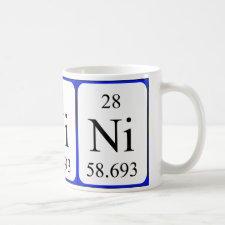
Authors: Zavvar MHA, Chamsaza M, Zohoria G, Darroudib A, Rezvania A
Publication date: 2011
Article title: Ion imprinted polymer based new ion-selective electrode for the trace determination of Nickel (II) ions.
Alternative URL: http://icc2011.ir/Docs/D.pdf
Conference information: Abstracts, 15th Iranian Chemistry Congress
Abstract: The need for nickel monitoring is important due to its toxic nature [1].Imprinted polymers are biomimetic materials used for the sensitive and selective detection of analyte molecules. Through host guest interactions, imprinted polymers often display recognition capabilities comparable to those of antibody–antigen systems. The Nickel (II) ion imprinted polymer particles(IIP) were synthesized via single pot method by dissolving preformed binary complex of Nickel(II) with 5,7-dichloroquinoline-8-ol (DCQ) and 4-vinylpyridine (VP) in acetonitrile (porogen) and copolymerized thermally after addition of MMA(monomer) and EGDMA (crosslinking monomer) in the presence of 2,2-azobisisobutyronitrile (initiator) according to literature through the wellknown [2]. A graphite disk electrode was fabricated from a graphite rod with a 4 mm diameter housed and glued into a Teflon holder. The exposed surface of the disk electrode was polished to a shiny finish with SiC paper. The electrode was rinsed with water and allowed to dry. The chemically modified disk graphite electrodes were prepared by thorough mixing PVC, NPOE, NaTPB and Nickel (II) IIP particles (30–60 μm size) in proportions of 27, 5, 53 and 15% (w/w), respectively that were dissolved in 2.5 ml of tetrahydrofuran (THF). After the mixture homogenized in a sonicator and then poured into a beaker. The THF solvent was allowed to evaporate at room temperature to obtain a concentrated mixture, then covered carefully graphite disk with concentration mixture. The solvent allowed evaporating to thin PVC film formed on the graphite electrode surface. The potential response obtained with the electrodes prepared with nickel(II) IIP membrane .The plot obtained for the sensor with nickel (II) IIP particles showed a slope of 29.32mV per decade over a wider concentration range of 2×10 -7 to 1×10 -2 M of nickel (II) is the expected Nernstian slope for the divalent cations. The limit of detection was 1×10 -7 M calculated based on the IUPAC definition. Potentiometric selectivity coefficients, describing the preference of the nickel(II) IIP based ISE for nickel(A) relative to an interfering ion( B) were determined by the matched potential method(MPM), recommended by IUPAC. Selectivity parameter data for various ions are presented in Table 2
Template and target information: nickel ion, Ni(II)



Join the Society for Molecular Imprinting

New items RSS feed
Sign-up for e-mail updates:
Choose between receiving an occasional newsletter or more frequent e-mail alerts.
Click here to go to the sign-up page.
Is your name elemental or peptidic? Enter your name and find out by clicking either of the buttons below!
Other products you may like:
 MIPdatabase
MIPdatabase









